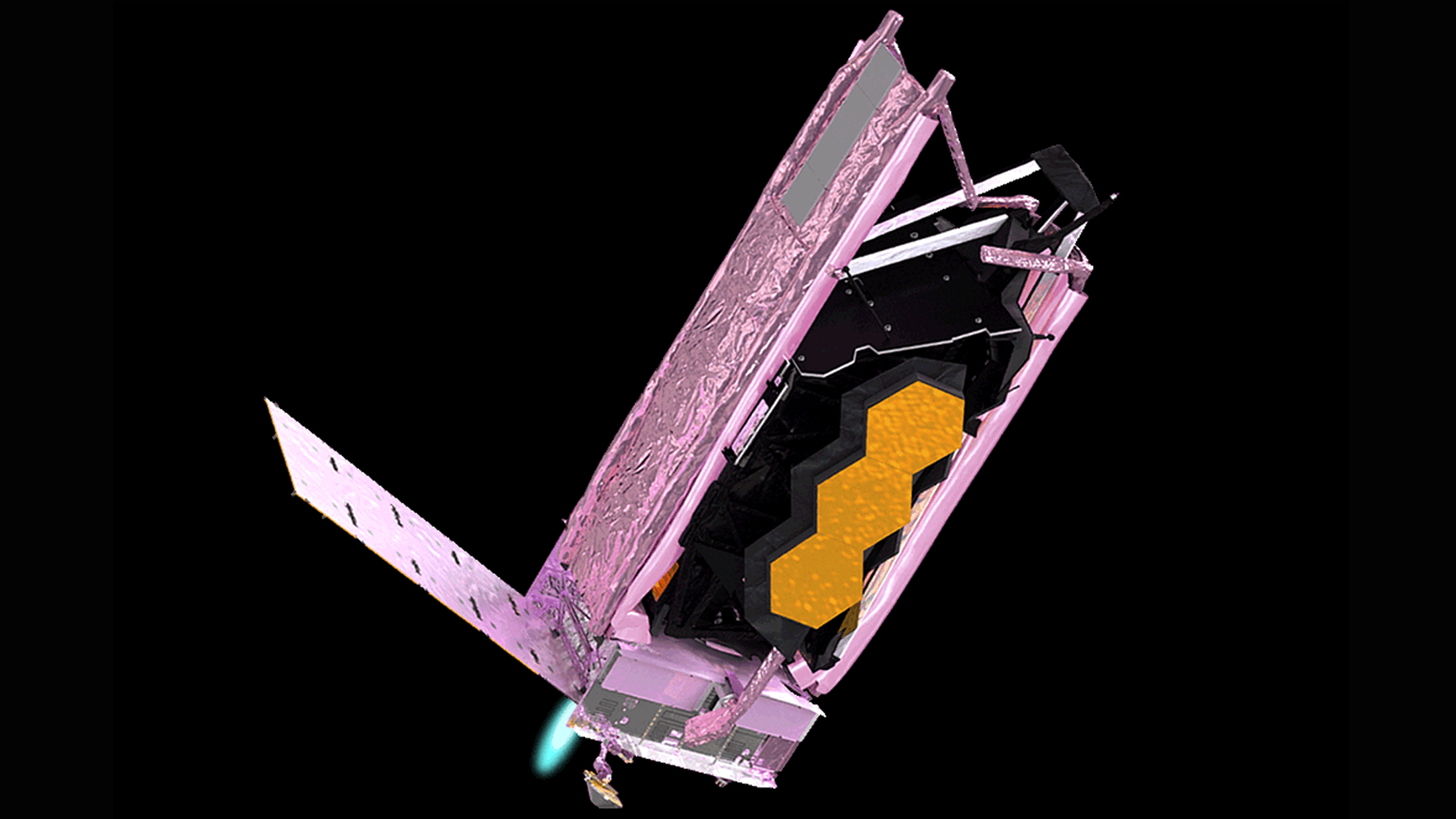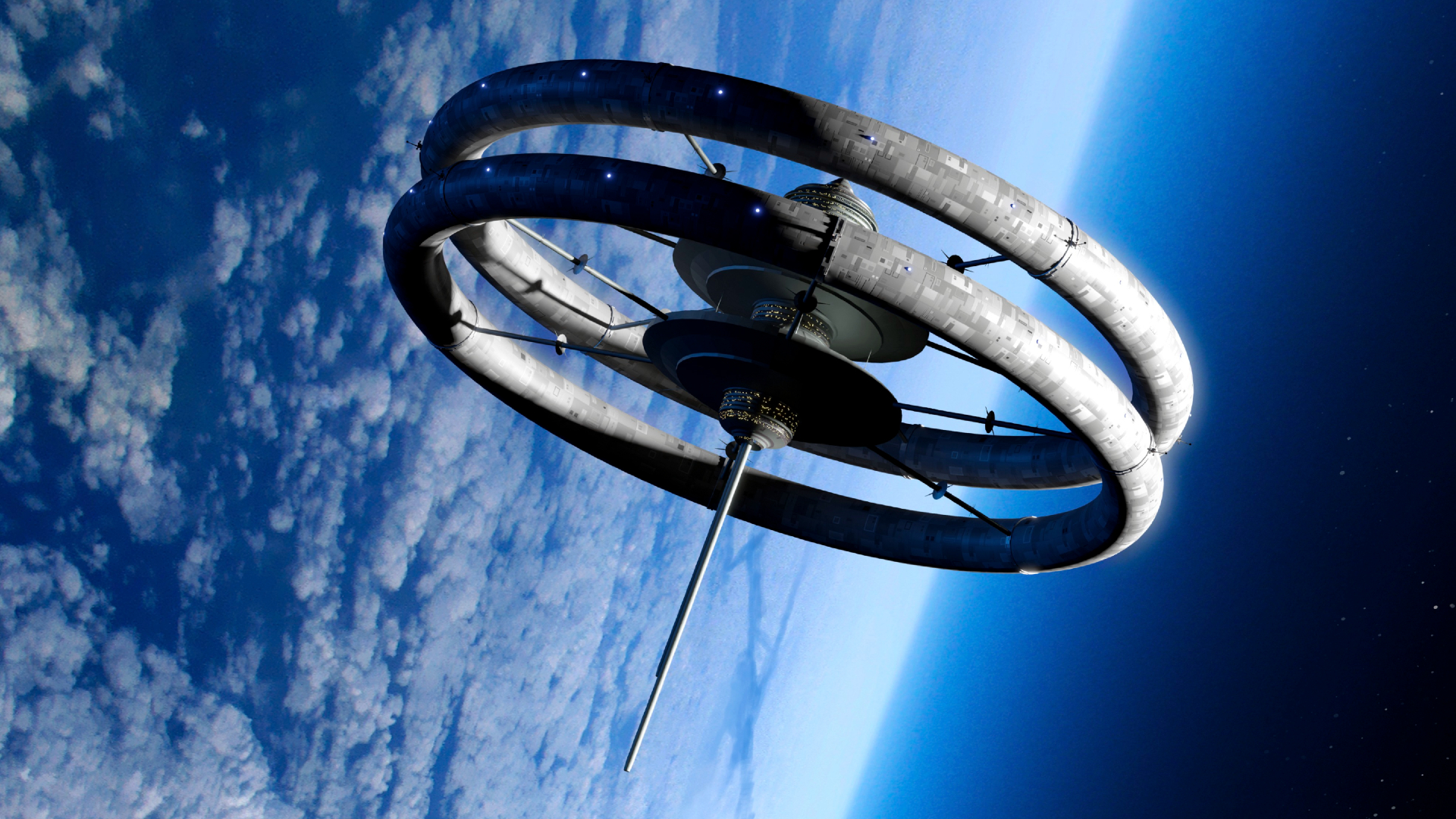James Webb Space Telescope has enough fuel for way more than 10 years of science
It's thanks to a super-precise launch, NASA says.

NASA's newest flagship space observatory should have enough fuel to more than double its minimum mission life peering into the history of the universe, according to an agency update.
The long-awaited James Webb Space Telescope, a collaboration with the Canadian and European space agencies led by NASA, launched into space Saturday (Dec. 25) on an Ariane 5 rocket. Often billed as a successor to the agency's iconic Hubble Space Telescope, Webb (also known as JWST) is designed to focus on infrared light, giving astronomers a look at the earliest days of the universe. Despite an ambitious science agenda, the mission was designed with just a five-year minimum lifetime — but with the observatory finally in space, NASA is confident that it will have enough fuel to see much more use than that.
"The Webb team has analyzed its initial trajectory and determined the observatory should have enough propellant to allow support of science operations in orbit for significantly more than a 10-year science lifetime," NASA officials wrote in a statement posted Wednesday (Dec. 29)." For comparison, the Hubble Space Telescope has lasted more than 30 years.
Live updates: NASA's James Webb Space Telescope mission
In photos: The Christmas launch of NASA's James Webb Space Telescope
"Incredible news! Congratulations to the team!" Thomas Zurbuchen, NASA's associate administrator for science, wrote in a tweet also posted Wednesday. "The extra propellant is largely due to the precision of the @Arianespace Ariane 5 launch, which exceeded the requirements needed to put @NASAWebb on the right path, as well as the precision of the first mid-course correction maneuver."
That said, the agency noted that it can't provide a specific estimate for how long the observatory will last.
"The analysis shows that less propellant than originally planned for is needed to correct Webb's trajectory toward its final orbit," officials wrote in the statement. "Consequently, Webb will have much more than the baseline estimate of propellant — though many factors could ultimately affect Webb's duration of operation."
Breaking space news, the latest updates on rocket launches, skywatching events and more!
Webb has completed two of the three burns required to see it to its final destination; the final burn will take place nearly a month after launch and will mark the last step in the observatory's perilous deployment process. The first maneuver occurred on Saturday after launch, with the second taking place Monday (Dec. 27).
Webb is destined to orbit a location in space known as the second Earth-sun Lagrange point, or L2, which is nearly 1 million miles (1.5 million kilometers) away from Earth in the direction opposite of the sun. Here, the telescope will be less vulnerable to solar radiation that can interfere with its infrared observations.
Lagrange points are sometimes nicknamed "parking" spots for spacecraft, as they mark locations where the gravitational tugs of different bodies balance out. However, throughout its stay at L2, Webb will need to conduct occasional small thruster burns for "station keeping" and "momentum management" to retain its proper location and orientation in space.
That's what the propellant remaining after the third burn will be used for. And Webb will have more fuel left in its tank than NASA had dared to hope. The initial launch precisely targeted the observatory's desired trajectory, meaning the spacecraft needed to spend less time and fuel on its first two correction maneuvers.
Email Meghan Bartels at mbartels@space.com or follow her on Twitter @meghanbartels. Follow us on Twitter @Spacedotcom and on Facebook.

Meghan is a senior writer at Space.com and has more than five years' experience as a science journalist based in New York City. She joined Space.com in July 2018, with previous writing published in outlets including Newsweek and Audubon. Meghan earned an MA in science journalism from New York University and a BA in classics from Georgetown University, and in her free time she enjoys reading and visiting museums. Follow her on Twitter at @meghanbartels.
